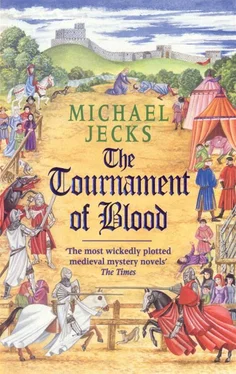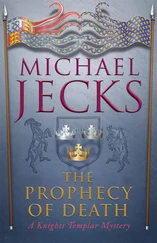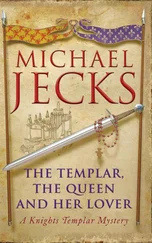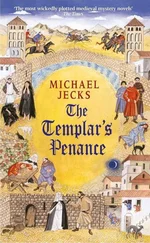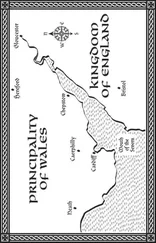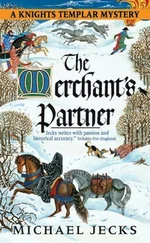Venant
A man who answered a tenant ’s challenge.
Vespers
Although this commonly meant the sixth canonical service (now called Evensong), vespers also meant the eve of a festival. As such it came to mean the vigil day before a tournament and was later used as the technical term for practice runs by knights at each other.
Sir Baldwin de Furnshill
Once a Knight Templar, Sir Baldwin has returned to his old home in Devon and is Keeper of the King’s Peace. He’s known to be an astute investigator of violent crime.
Lady Jeanne
His wife, to whom he has been married only a year. Jeanne is a widow whose first husband treated her cruelly, and now she is learning to enjoy married life for the first time.
Edgar
Baldwin’s servant and trusted steward. Edgar was Baldwin’s Sergeant when he was a Knight Templar and is, like his master, a highly experienced fighter, trained with all weapons.
Simon Puttock
The Bailiff of Lydford is the Stannary Bailiff, responsible for law and order on Dartmoor under Abbot Champeaux, the Warden of the Stannaries.
Sir Roger de Gidleigh
Exeter’s Coroner and for some months a friend of Sir Baldwin.
Margaret Puttock (Meg)
Simon’s wife, daughter of a local farmer, whom he married many years before.
Edith
Simon and Margaret’s daughter, nearly fourteen years old.
Hugh
Hugh has been Simon and Margaret’s servant for many years. Although the previous year he left them to marry, he has now rejoined them.
Lady Alice
The teenaged daughter of a neighbour of Sir John’s, orphaned when she was a small child and subsequently taken by Sir John as his ward.
Squire Andrew
Sir Edmund’s squire is a battle-hardened older man with the quick reflexes of a professional man-at-arms.
Sir Peregrine of Barnstaple
Lord Hugh’s loyal servant. This banneret is as keen as his lord to see how skilled Lord Hugh’s host, his army, is.
Sir Walter Basset
Known for his violence in tournaments, Sir Walter of Cornwall is quick to anger and never forgets an insult. In great debt to money-lenders, he is keen to earn money from a tournament.
Lady Helen
Sir Walter’s beautiful and loyal wife.
Wymond Carpenter
Master-builder and craftsman, Wymond has worked alongside Hal for several years. Morose, and truculent with it, Wymond is disliked by his workers and others.
Lord Hugh de Courtenay
This nobleman has decided to patronise a tournament, in order to assess the skills and loyalty of his vassals in the wake of the Battle of Boroughbridge, in which Earl Thomas and his men were killed.
Sir John de Crukerne
A knight from West Dorset who is attending the tournament with his son. He is Lady Alice’s legal guardian.
Squire William
Sir John’s son, whom Sir John would like to see engaged to Alice and who is expecting to be knighted at the tournament.
Benjamin Dudenay
A usurer, Benjamin has often helped knights who need to raise money, either to pay ransoms or to buy arms and armour. He also helps men like Lord Hugh to fund the tournament itself.
Squire Geoffrey
Alice’s lover who, like William, anticipates being knighted at the tournament.
Sir Edmund of Gloucester
This wandering knight is without a lord since Boroughbridge and wishes to impress Lord Hugh with his prowess in the lists.
Helewisia
Alice’s maid, a servant from Sir John’s household.
Herald Odo
A herald who has returned to England after some years in France and Germany learning new songs and a little about the Continental approach to heraldry and tournaments.
Sir Richard Prouse
Grievously wounded many years before in another tournament, Sir Richard is bitter about his hideous scars and disabilities.
Hal Sachevyll
A renowned architect of the buildings involved in a tournament, Hal also considers himself an expert on the pageantry associated with these events. Filled with magnificent ideas which would challenge the purse of a king, he often has to scale down his initial concepts to meet the needs of his clients.
Mark Tyler
Lord Hugh has one herald who remains with him and who bears the title ‘King Herald’ of his household. Mark is a middle-aged man, sour-natured and jealous of others who might try to take his post.
When one considers the medieval period, one automatically thinks of damsels in distress and knights in armour. The era is filled with tales of knightly chivalry, of errantry, of honourable fights and pageantry. And one of the most potent symbols of that era of glorious chivalry is the joust. One man against another; both keen to show their prowess and courage.
Hollywood would have us believe that tournaments involved two men riding against each other, both behaving thoroughly courteously, both equal in rank and honour, each one trying to knock his opponent from his horse in as polite a manner as possible. Naturally when one fell, the other would wait until he was on his feet again, and then the two would go at it again, probably stopping for a nice cup of tea to refresh themselves.
But Hollywood hasn’t quite got it right. In the early days, tournaments were far from civilised, which is why the Church banned them from 1130 at the Council of Clermont.
Tournaments altered over time. There were several different forms, but all developed from one aim: to teach men to fight in war. The earliest version shows this most clearly, because it was a straightforward battle. Called a mêlée , it involved two groups of armed men meeting between two villages or towns (in other words not in a small field but in a non-specific and large battlefield); they charged and fought just as if they were in a real battle, no holds barred. Participants went at each other hammer and tongs, with three or four against one, while others hid behind trees hoping to ambush the unwary. The most unscrupulous might even wait at a nearby tavern until all the contenders were exhausted, then ride in to take as many prisoners as possible. Competitors wanted to win not because of some abstruse concept such as chivalry – but for hard cash.
When a knight knocked merry hell out of a competitor in the fight, he could capture the fellow, drag him off the field, and then ransom him. This was how our betters used to behave and was presumably the foundation of the fortunes of several of our leading families. Not only could the knight take a ransom, he could keep his victim’s armour and horse. This at a time when a good warhorse could cost as much as £150. To put this into perspective, the salary of a skilled worker was 3d per day, an unskilled worker 1½d per day; thus the horse was worth 12,000 man-days – well over thirty years – for a skilled worker. It’s no wonder people have estimated the expense of a warhorse to have been roughly the equivalent of a modern battle-tank.
Naturally, capable knights could make themselves large fortunes. One prime example was William the Marshall, who tended to win rather regularly. He and another enterprising young knight formed an alliance in 1177, travelling across Europe from one tournament to another for ten months, sharing their profits equally. They successfully ransomed over 100 knights in that time. Of course such men didn’t only win short-term money, either. Often they would catch the eye of a wealthy patron, someone who could give them a more secure future.
Читать дальше
